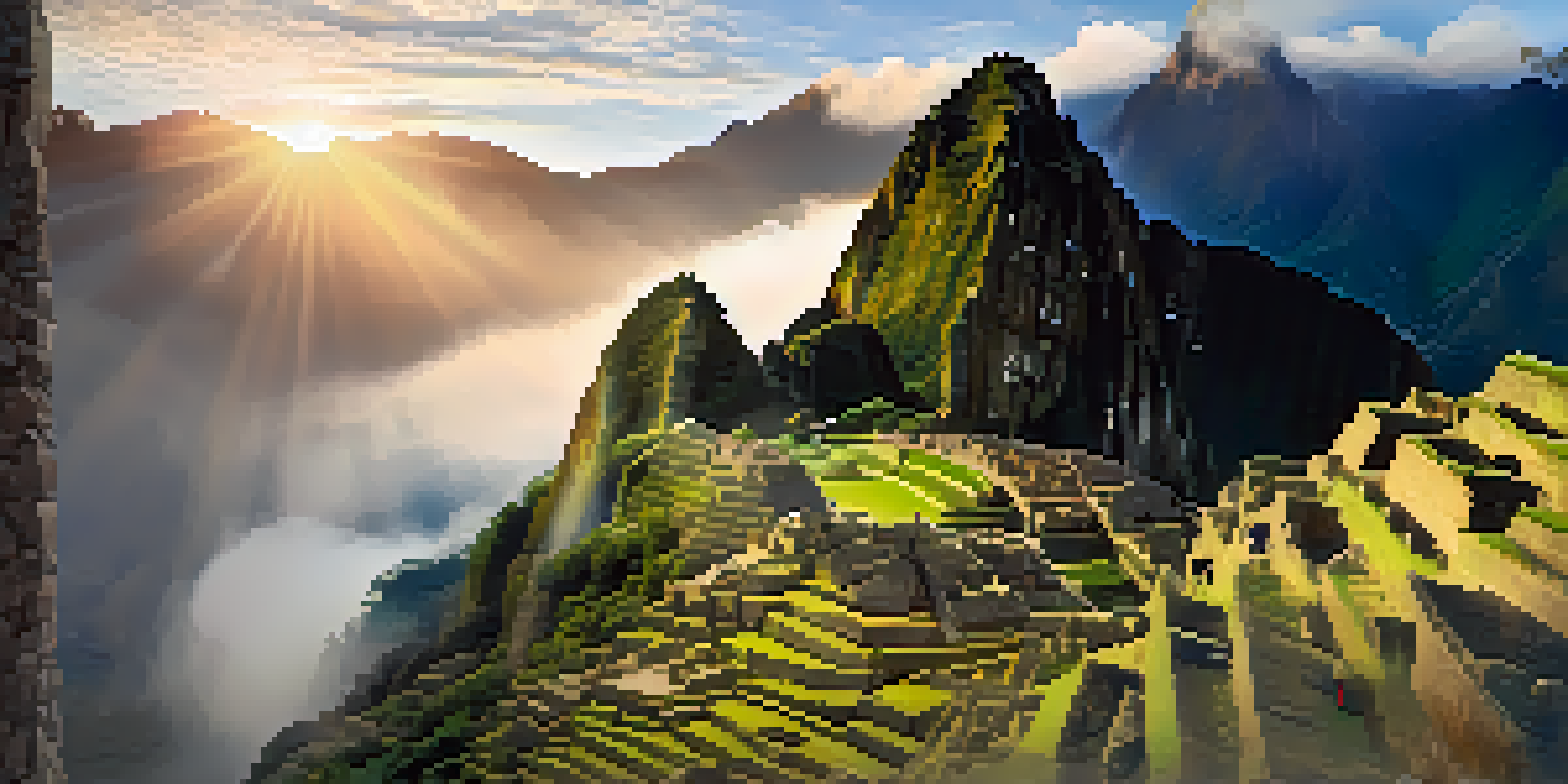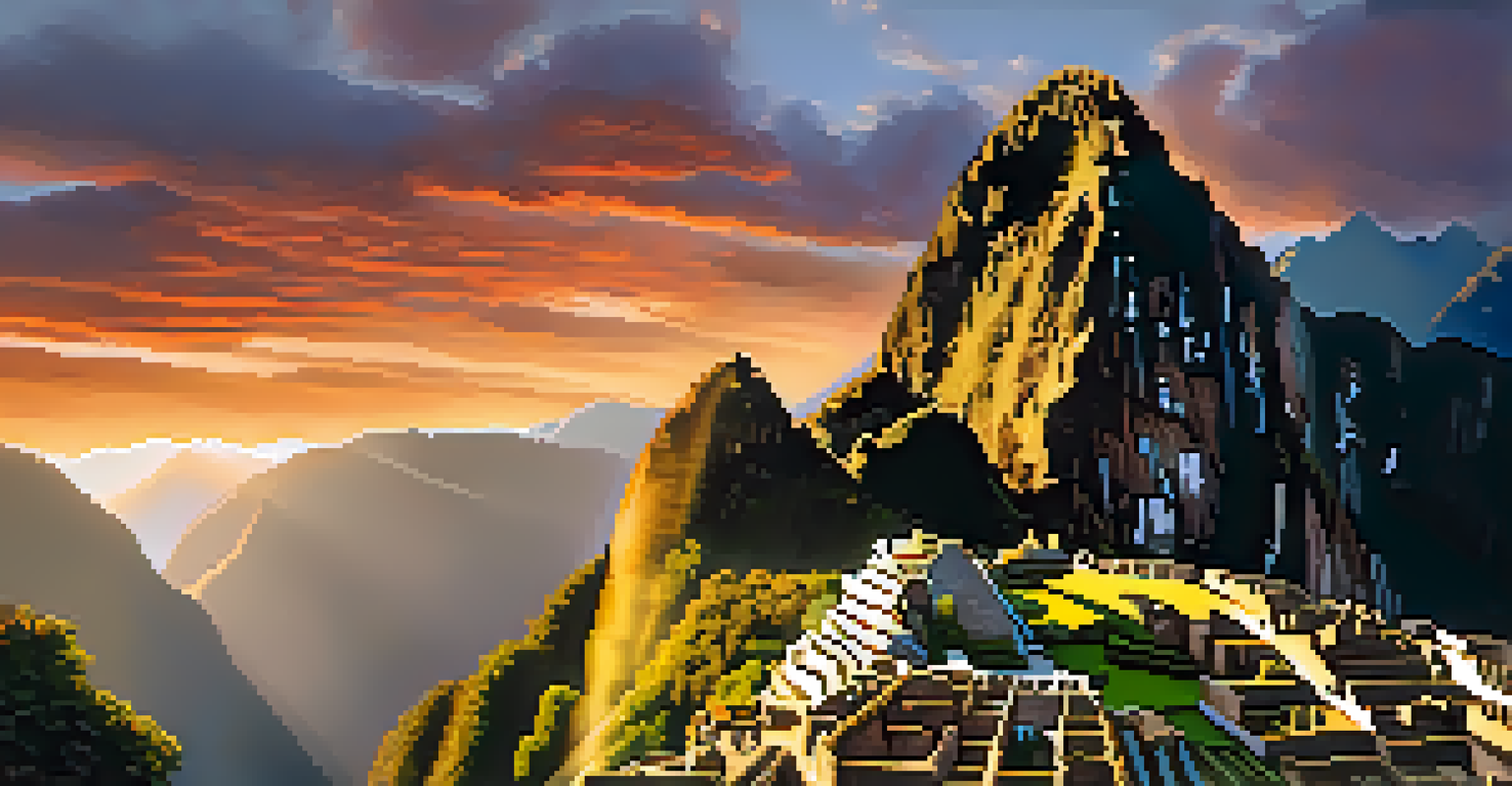Exploring Machu Picchu: A Photographer's Dream Tour in Peru

Why Machu Picchu is a Photographer's Paradise
Machu Picchu is often referred to as a photographer's paradise, and for good reason. The ancient Incan citadel, nestled high in the Andes Mountains, offers stunning vistas that seem to change with every passing hour. From the iconic silhouette of Huayna Picchu to the lush greenery surrounding the ruins, every corner presents a new perspective waiting to be captured.
Photography is the story I fail to put into words.
The interplay of light and shadow throughout the day creates a dynamic canvas for photography. Early morning mists often envelop the ruins, providing a mystical atmosphere that enhances the beauty of the site. As the sun rises, the golden rays illuminate the stone structures, offering incredible opportunities for breathtaking shots.
Additionally, the rich cultural history of Machu Picchu adds depth to your photography. Each stone and pathway tells a story, allowing photographers to capture not just images, but a sense of time and place that resonates with viewers long after the trip.
Best Times to Visit for Optimal Photography
Timing is crucial when it comes to photography, and Machu Picchu is no exception. The dry season, from April to October, is generally the best time to visit, as it offers clearer skies and less rain. This is particularly important for landscape photography, where visibility can make or break an image.

Early mornings are particularly magical at Machu Picchu. Arriving before sunrise allows you to capture the ruins bathed in soft, diffused light, often accompanied by ethereal fog. The tranquility of the early hours also means fewer crowds, giving you the freedom to shoot without interruption.
Machu Picchu: A Photo Haven
The breathtaking landscapes and rich history of Machu Picchu create endless photography opportunities for capturing stunning images.
Conversely, visiting during the rainy season can have its perks. The lush landscapes are vibrant and alive, providing a different, yet equally stunning backdrop. Just be prepared for the occasional downpour, which can create dramatic skies and reflections that add character to your photos.
Essential Photography Gear for Your Journey
Before embarking on your Machu Picchu adventure, it’s essential to pack the right photography gear. A DSLR or mirrorless camera is ideal for capturing high-quality images, along with a sturdy tripod for those long exposure shots at dawn or dusk. A versatile zoom lens will allow you to capture both wide-angle landscapes and close-up details.
To photograph is to hold one's breath, when all faculties converge to capture fleeting reality.
Don’t forget extra batteries and memory cards! The breathtaking scenery will likely inspire you to take more photos than you initially planned. Having backup gear ensures you won’t miss out on capturing that perfect moment, whether it’s a sweeping view or a close-up of intricate stonework.
Finally, consider bringing a polarizing filter to reduce glare and enhance colors in your images. This can be particularly useful in a bright environment like Machu Picchu, where reflections can detract from the beauty of your photographs.
Capturing the Iconic Landmarks of Machu Picchu
Machu Picchu is home to several iconic landmarks that should not be missed by any photographer. The Temple of the Sun, with its semi-circular construction, stands as a testament to Incan engineering and spirituality. Capturing this landmark from different angles can reveal its grandeur and intricate details.
Another must-photograph site is the Intihuatana stone, often referred to as the 'Hitching Post of the Sun.' This ritual stone structure, believed to be a ceremonial site, makes for a compelling focal point against the backdrop of the Andes. The interplay of light during sunrise or sunset can create dramatic shadows that enhance your images.
Best Times for Capturing Shots
Visiting during the dry season and early mornings offers ideal lighting and fewer crowds for photography at Machu Picchu.
Lastly, don’t overlook the panoramic views from various vantage points around the site. Locations such as the Inca Bridge and the Sun Gate provide sweeping vistas that showcase the surrounding landscape and the citadel itself, allowing for stunning landscape photography.
Engaging with Local Culture for Unique Shots
While Machu Picchu is certainly the star of the show, the local culture adds a rich layer to your photography. Interacting with local artisans and communities can provide opportunities to capture authentic moments that reflect the vibrant culture of Peru. From traditional clothing to handicrafts, these images tell stories that complement your shots of the ruins.
Consider visiting nearby villages such as Aguas Calientes, where you can photograph local life against the backdrop of the mountains. The colorful markets, bustling with vendors and shoppers, offer a lively contrast to the serene beauty of Machu Picchu. These interactions can enrich your travel experience and provide unique content for your portfolio.
Engaging with locals also allows for a deeper understanding of the history and significance of Machu Picchu, which can inform your photography. Capturing the essence of the people and their connection to this historic site can create a narrative that resonates with viewers.
Tips for Post-Processing Your Photos
Once you've returned from your Machu Picchu adventure, it's time to enhance your photos through post-processing. Software like Adobe Lightroom or Photoshop can help you adjust exposure, contrast, and colors to bring out the beauty of your images. A little editing can transform your photos from good to stunning, providing that extra 'wow' factor.
When editing landscape shots, consider bringing out the greens of the lush surroundings and the blues of the sky to create a vibrant scene. Be careful not to over-edit, as maintaining a natural look is crucial, especially for iconic sites like Machu Picchu, which are celebrated for their authenticity.
Engaging with Local Culture
Interacting with local communities enhances your photography by adding authentic cultural elements to your images.
Additionally, experimenting with cropping can help enhance composition. Sometimes, a simple crop can focus the viewer’s attention on key elements of the photograph, making it more impactful. Remember, the goal is to share the beauty and awe of Machu Picchu through your lens.
Final Thoughts: Immortalizing Your Machu Picchu Experience
As you prepare to embark on your photography journey to Machu Picchu, remember that each click of the shutter is an opportunity to tell a story. This ancient citadel, steeped in history and natural beauty, deserves to be immortalized through your unique perspective. Take the time to explore, experiment, and capture the essence of this incredible site.
Don’t rush your photography; allow yourself to wander and find hidden gems that others might overlook. Often, the most captivating shots come from unexpected angles or moments of spontaneity. Embrace the experience, and let your creativity flow as you capture the breathtaking scenery.

Ultimately, your photographs will serve as a reminder of your adventure, inviting you and others to experience the magic of Machu Picchu long after your visit. So pack your bags, grab your camera, and get ready for the dream tour of a lifetime!